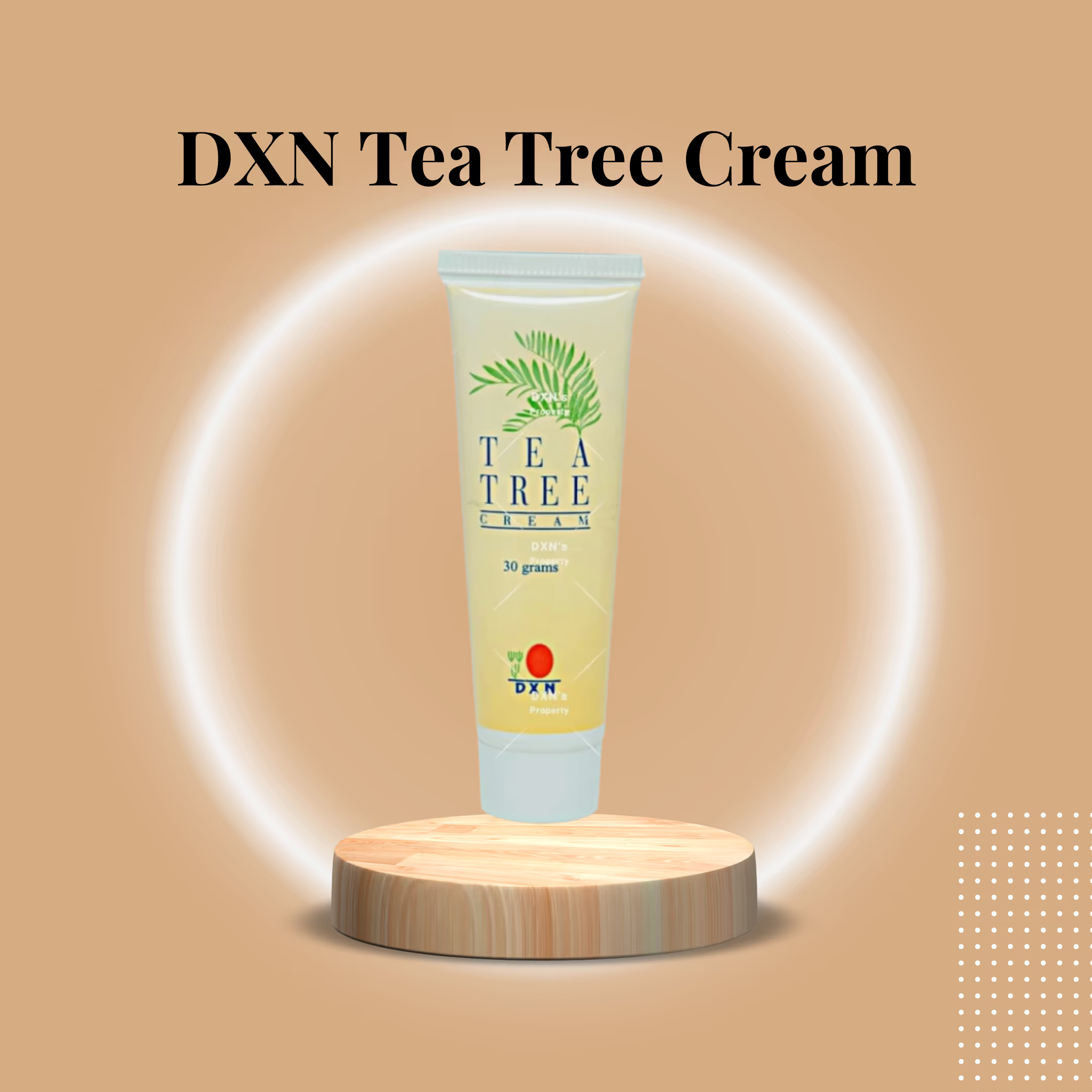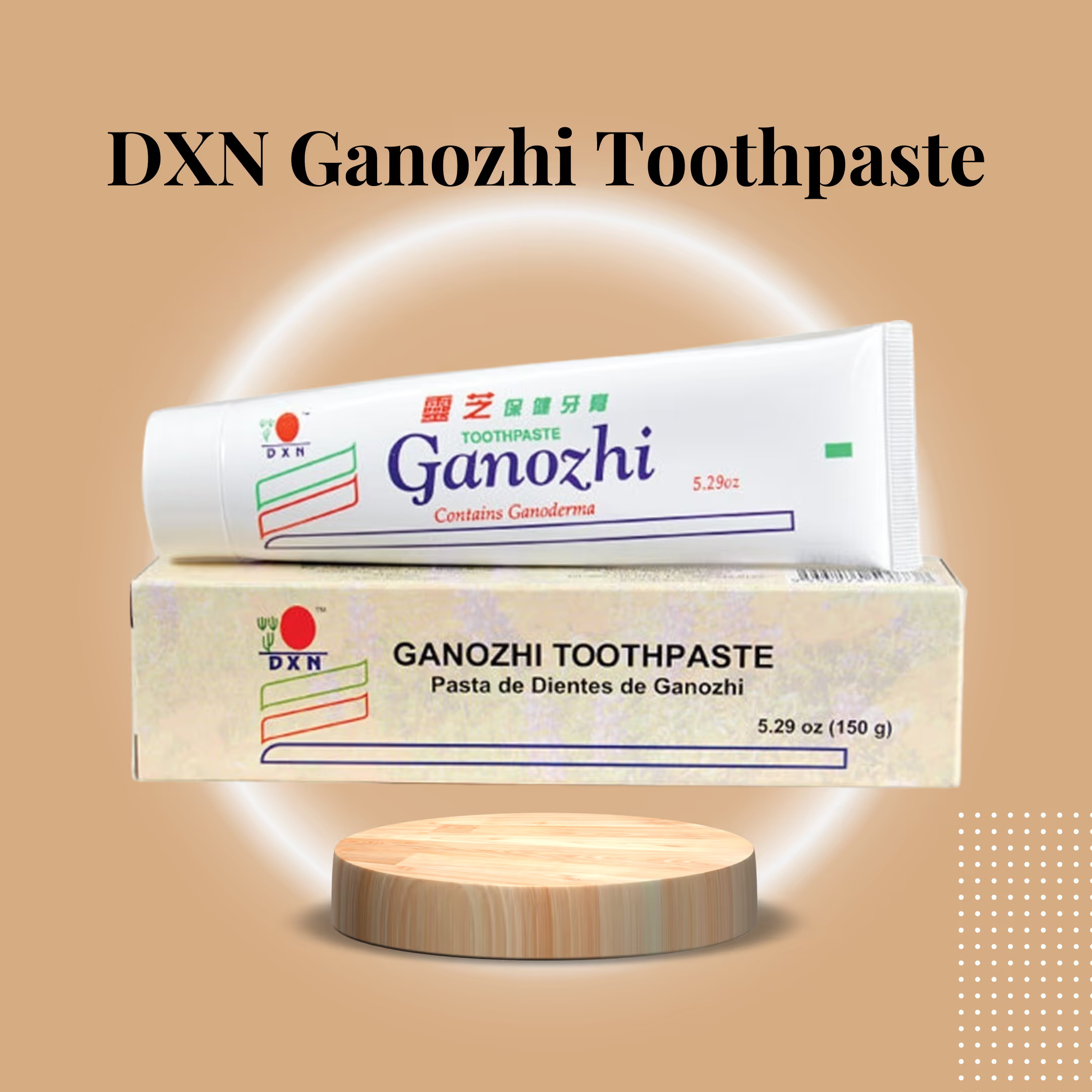What the product aims to solve
People want three things when they add “cream” to a drink:
• Luxurious, smooth texture
• Neutral or complementary flavor that doesn’t fight the base beverage
• Predictable performance (no curdling in hot coffee, no separation in iced drinks)
Achieving all three without loading a beverage with cholesterol, lactose, or heavy calories is the engineering challenge behind modern creamers. DXN’s answer is a powdered, shelf-stable creamer designed to mimic dairy’s mouthfeel while intentionally keeping cholesterol at 0 mg and calories extremely low per serving. It’s also built to support — not hide — the functional ingredients found in many DXN beverages (Ganoderma lucidum extracts, ginseng blends, herbal teas, etc.).
Ingredient breakdown: what’s in the powder and why
Understanding ingredients helps you decide whether a food fits your needs. Below is a straightforward summary of the primary components typically found in this type of powdered non-dairy creamer, along with their respective roles.
• Glucose syrup solids — structure and solubilityThese starch-derived solids act as the powder’s backbone: they provide bulk, help the creamer dissolve quickly in hot water, and contribute to a drinking texture that feels fuller on the tongue.
Unlike whole milks, which rely on fluid fat for the body, powdered formats require carriers that rehydrate predictably. Glucose syrup solids do that job without adding lots of fat or lactose.
• Hydrogenated vegetable oils (coconut and/or palm kernel) — stable fat sourcePowdered creamers require fats that remain stable and solid at room temperature, allowing them to be spray-dried and reconstituted cleanly. Coconut and palm kernel oils meet that need. While these tropical oils contain saturated fatty acids, the actual creamer serving contains very little fat (0.5 g per serving), resulting in minimal net intake. A functional upside: these oils are rich in medium-chain triglycerides (MCTs), which behave differently in the body than long-chain fats and can provide quick metabolic energy.
• Sodium caseinate — an effective emulsifier (milk-derived)Sodium caseinate is a milk protein that helps create the creamy, stable emulsion you expect in a latte. It’s so good at that job that many manufacturers use it specifically because powdered creamers must perform across a variety of temperatures and acidity levels. Important: Sodium caseinate is a milk derivative, so while the creamer can be lactose-free, it is not strictly vegan and is not suitable for people with milk protein allergy.
• Emulsifiers and stabilizers (mono- and diglycerides, dipotassium phosphate, silicon dioxide, etc.)These ingredients help the powder dissolve, prevent clumping, keep fats suspended evenly, and avoid separation when mixed with hot beverages. They’re the behind-the-scenes chemistry that turns a powder into a silky soft drink.
Texture and stability: how the powder mimics milk
A great creamer must perform well in two challenging environments: hot, acidic coffee and chilled iced drinks. Powdered formats engineered with the right combination of emulsifiers and milk proteins can resist curdling (the reaction that sometimes occurs when adding plain plant milk to espresso) and produce a creamy mouthfeel upon contact. That predictable behavior is a major convenience for busy people who want fast, reliable results and don’t want to fuss with frothers or special barista blends. DXN’s formula is built with that use case in mind: it dissolves rapidly, yields consistent body, and keeps functional tastes (like Ganoderma) pleasant and approachable.
Zero cholesterol, low calories — what does that actually mean for daily health
One of the biggest practical benefits of using a powdered non-dairy creamer is cutting cholesterol exposure. Animal-based creamers and heavy cream contain cholesterol because they’re derived from milk fats; over time, that dietary cholesterol can contribute to elevated LDL levels for people predisposed to heart disease. Choosing a cholesterol-free option is a simple swap that, cumulatively, reduces cardiovascular load.
Per serving, DXN’s creamer is intentionally low in calories and total fat: approximately 10 calories and 0.5 g of total fat. That low profile means you can maintain the pleasure of a creamy cup without dramatically altering your daily calorie or saturated fat budget. Swapping out high-fat dairy in two or three daily servings is an easy and practical lever for people monitoring their heart health or aiming for gradual weight management.
MCTs and metabolic energy: a purposeful choice
Coconut and palm kernel oils bring medium-chain triglycerides into the product. What’s helpful about MCTs is how the body handles them: they’re more rapidly transported to the liver and can be converted into ketone bodies, offering a quick, clean source of fuel for the brain and muscles without the storage patterns typical of longer-chain fats. In practical terms, this can translate into a modest, stable energy lift and mental clarity — a complementary effect for DXN’s functional beverages, which often target energy, focus, or adaptogenic balance. Because each serving contains a small amount of these oils, the energy bump is gentle rather than extreme.
Lactose-free but not necessarily vegan: sodium caseinate explained
A frequent source of confusion is the “non-dairy” label on powdered creamers that nevertheless contain sodium caseinate. Why does that happen? Regulatory definitions allow some products to be labeled “non-dairy” when they don’t contain milk sugar (lactose) or milk fat, even if milk proteins are present in processed forms. Sodium caseinate is a milk protein that excels at creating a silky feel, and its inclusion means the product is essentially lactose-free for people with lactose intolerance — most individuals who react to milk are reacting to lactose rather than to milk protein.
However, the presence of a milk derivative means:
• It’s not suitable for strict vegans.
• It’s not suitable for people with milk protein allergies.
• It is usually safe for people who avoid lactose but do not have protein-based milk allergies.
DXN’s transparent labeling helps consumers make informed choices for their needs.
How the creamer supports functional beverages (the DXN ecosystem)
DXN’s beverage line includes Ganoderma-enriched coffees and herbal blends with bold, often medicinal-toned flavors. Those functional extracts can be polarizing: people benefit from their effects, but the taste can be off-putting if the formulation is too bitter or “mushroomy.” The creamer’s job in this ecosystem is simple and strategic:• Soften bitter edges without masking the functional benefit;• Provide a neutral, slightly sweetened body so that adaptogenic extracts are more enjoyable;• Improve mouthfeel to encourage daily intake — and consistent use is how many functional benefits materialize over time.
In short, a better-tasting, more comfortable beverage can increase adherence to a daily routine that supplies adaptogens, antioxidants, and other essential nutrients.
Comparisons: DXN Non-Dairy Creamer vs. common alternatives
Make the swap with context — here’s how the creamer stacks up in real life.
• Versus heavy cream or half-and-halfHeavy cream contributes significant amounts of cholesterol and saturated fat. Replacing it with a low-calorie, cholesterol-free creamer is an immediate heart-conscious improvement. The texture may be slightly different, but for most daily uses, the difference is negligible.
• Versus liquid plant milks (almond, oat, soy)Liquid plant milks are convenient but can separate or curdle in hot, acidic coffee. They often have distinctive flavor notes (oats’ sweetness, soy’s beaniness) that compete with delicate functional extracts. Powdered creamer provides more consistent stability and a neutral profile, keeping the beverage’s intended function in focus.
• Versus powdered creamers that are “completely plant-based”Truly vegan powdered creamers typically use starches and vegetable proteins to mimic texture. They work well for many people, but sodium caseinate remains the gold standard for creating a dairy-like mouthfeel at minimal fat levels. That choice is why DXN’s powder is lactose-free and high-performing, but not vegan.
Best ways to use the creamer — hot and cold
Hot drinks
• Stir into freshly brewed coffee: spoon the powder into the cup first, add a splash of hot water to make a slurry, then pour the remaining hot coffee. This helps prevent any small lumping and maximizes smoothness.
• Make a creamy herbal latte: dissolve the creamer in warm water, then add your brewed herbal tea or Ganoderma coffee for a soothing, milky beverage without the dairy load.
Cold drinks
Powdered creamer can sometimes clump in ice-cold liquids. For iced coffee or matcha lattes, use the “pre-mix” trick: whisk the powder into 1–2 tablespoons of hot water to create an emulsion, then mix with cold liquid and ice. Alternatively, blend with ice for a frothy, even result.
Culinary uses
Beyond the cup, the powder is handy in cooking: use it to enrich pancakes, add creaminess to mashed potatoes, or create a lactose-free base for creamy soups and sauces. Because it’s shelf-stable, it’s a convenient pantry item for travel or camping.
Pairing ideas within a wellness routine
• Morning: pair with a Ganoderma-enhanced coffee for calm focus.• Midday: add to Vita Coffee before a workout for sustained, MCT-supported energy.• Evening: stir into a caffeine-free herbal latte (Spica Tea-style) for soothing comfort without dairy.
Pairing the creamer with broader lifestyle habits — such as protein at meals, fiber-rich foods, adequate hydration, and regular movement — amplifies its benefits and supports sustainable wellness.
Storage, shelf life, packaging, and convenience
Powdered formats excel in terms of portability and shelf life. Keep the container sealed and stored in a cool, dry place. If the product is sold in single-serve sachets, those are convenient for travel and gifting. Powdered formulas are ideal for individuals who want a reliable option on the go or those who lack access to refrigeration.
Safety, special populations, and labeling clarity
• Lactose intolerance: generally safe — most people with lactose sensitivity tolerate products with sodium caseinate because lactose is absent.
• Milk protein allergy: avoid — sodium caseinate is a milk protein derivative and can trigger allergic reactions in sensitive individuals.
• Pregnancy and breastfeeding: generally safe, but check with your healthcare provider before adding concentrated functional foods or novel ingredients to your routine.
• Children and elderly: the creamer is usable, but consider overall nutrition and consult a clinician if there are specific health conditions.
Transparency and “One Dragon” quality control
DXN’s vertically integrated approach (research through manufacturing) emphasizes traceability and consistent standards. That kind of control is crucial for functional product lines, where the sensory and bioactive qualities of the beverage must be consistent every day.
Practical decision points to choose a creamer
Ask yourself:
• Do I need lactose-free but not necessarily vegan?
Sodium caseinate fits if you tolerate milk protein.
• Will I be drinking hot, acidic beverages frequently? Powdered creamer gives consistency and prevents separation.
• Is cholesterol a concern? Powdered, plant-based creamers remove dietary cholesterol entirely.
• Do I value a small functional boost from MCTs? If so, coconut/palm kernel fats can be an advantage in moderation.
.avif)





